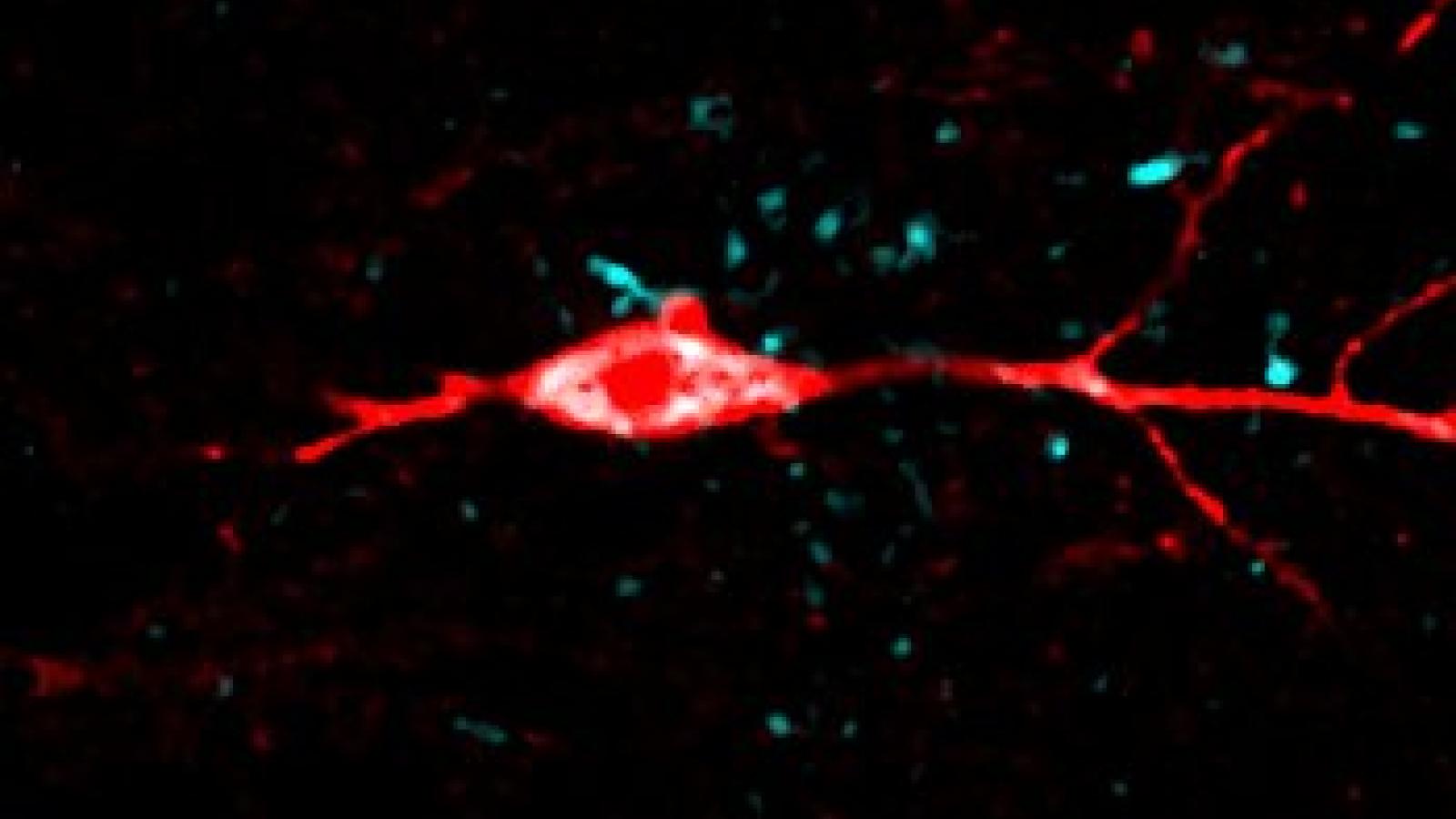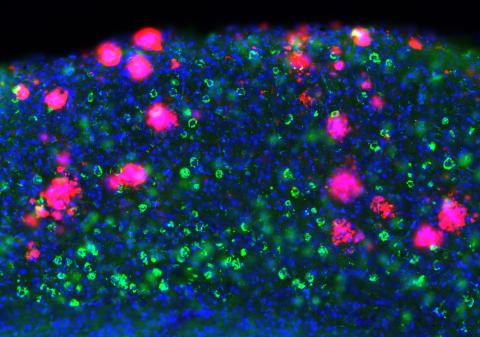Researchers led by Dr Marc Aurel Busche (UK DRI at UCL) found that tau, a protein implicated in Alzheimer’s, disrupts the way brain cells communicate. The study, published in Cell, unlocks a key piece of the puzzle in understanding how tau drives memory problems in people affected by the condition.
What was the challenge?
The build-up of toxic tau protein in the brain is known to be linked to the memory and thinking problems people affected by Alzheimer’s experience. However, scientists do not yet fully understand how tau drives this decline in brain function. In this study, the team aimed to examine how tau affects neurons by studying mouse models of Alzheimer’s and by introducing tau from human Alzheimer’s brain tissue directly into neurons.
What did the team do and what did they find?
The researchers used high-resolution brain recording tools in mice to look closely at the effects of tau on cells. They found that tau, even without the presence of amyloid beta, another Alzheimer’s-related protein, specifically disrupts a certain type of electrical activity in neurons in the hippocampus – a brain region that plays a crucial role in learning and memory.
This type of electrical activity is known as ‘burst firing’, where neurons send rapid bursts of signals that are important for forming memories. When burst firing is weakened, important firing patterns which help form and organise memories are also thrown off.
Our study reveals that tau protein, even without the influence of amyloid, can directly affect the brain's memory circuit by disrupting the burst firing of hippocampal neurons, an essential signal for learning and memory. We've pinpointed a form of tau from Alzheimer’s brains as the culprit, offering a promising new direction for targeted therapies aimed at preserving cognitive function.
Group Leader
The team also discovered that the neurons affected by tau had lower levels of CaV2.3 calcium channels, which are needed for burst firing to occur. Digging deeper, the scientists found that a specific form of tau – a large, sticky type called high molecular weight tau, observed in animal models as well as people with Alzheimer’s at all stages of the disease – was responsible for this disruption.
What is the impact?
This study shows that a specific type of toxic tau protein can disrupt the way neurons communicate, particularly in the hippocampus, a brain area critical for memory and affected early in Alzheimer’s. This disruption could be one of the key reasons people with Alzheimer’s experience cognitive decline. These findings position high molecular weight tau as a promising target for treatments for the condition.
Read more about this study on Alzforum.
Reference: Harris et al., Alzheimer’s disease patient-derived high-molecular-weight tau impairs bursting in hippocampal neurons, Cell (2025), https://doi.org/10.1016/j.cell.2025.04.006
Banner image: A hippocampal neuron filled with tau. Credit: Rikesh Rajani.

